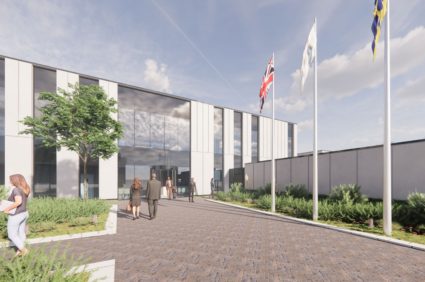
After several delays, the Environment Bill has now been entered into the Statute Book. This brings into force a set of environmental standards and measures which will become mandatory at the end of the Brexit transition period.
Developers and investors need to be aware of the Act’s statutory requirement that new development must have a minimum 10% BiodiversityNet Gain (BNG) and that this biodiversity increase is managed for at least thirty years. Although the Act’s effective date is 2023, and the minimum requirement is a 10% offset; many local plans have already required a minimum 10% Biodiversity Net Gain (BNG) before the legislation took effect. Some also require a maximum of 20% BNG.
Natural England Biodiversity Metric 3.0 demonstrates how requirements for 10% and 20% BNG should be measured, and how the alternatives to on-site provision – biodiversity credits and conservation covenants – will work.
BNG delivery methods:
- On-site: Enhancing and adding new habitats to the development.
- Off-site: Enhancing off-site habitats through the purchase or financing of landowners to increase biodiversity on their land
- Purchase of biodiversity credit that funds off-site enhancements
BNG can be a problem for developers where it exists. It can create net gains within existing sites or allocations and it can also make it difficult for developers to acquire additional land.
The main concern is value. Because of the requirement to attain a minimum 10% net profit, greenfield sites with high biodiversity value will be more expensive to develop. This is because larger areas of land will be needed to enhance ecological values such as wildflower meadows and orchards. Therefore, housing may need to decrease.
Delivering off-site BNG can have financial consequences. This is an additional cost that may be unexpected and not planned for. Its impact depends on the supply and demand of suitable land. This will cause it to rise in areas that are most desired. If development sites were purchased before the introduction of BNG was known to developers, this will result in higher house prices as well as a reduction in planning gains requirements (where applicable), affordable housing and community contributions. Developers may seek to lower the land price for sites that have not yet been purchased. This will reflect the increased cost and help the landowner feel the hit.
There are both winners and losers, however. If there is a lot of development, land that is not suitable for development, but which can be used for offsetting, or land that is lacking in biodiversity, the landowners will see a rise in value. While this is good news, not all non-developable land will be considered suitable. One example is ground contamination and surface water flooding that could limit a site’s potential for off-setting. It may not be possible for a site that is already rich in biodiversity to gain the 10% net gain.
Developers have the option to purchase biodiversity credit. Developers will be able to offset the impact of biodiversity loss elsewhere by purchasing biodiversity credits. The details of the scheme are yet to be determined but they are likely to be implemented in central Government. The aspiration for higher levels of biodiversity is applicable across the country. It is therefore unlikely that the Government would encourage the offsetting or mitigation of development land in home counties through biodiversity protected in the Scottish Highlands.
The impact of BNG is certain to be significant. We expect it will be a key consideration for the allocation of development in new Local Plans through Local Nature Recovery Strategies as well as a determining factor when new sites are acquired. There will be many questions regarding the viability and value of BNG. Both local authorities and land developers need to be realistic about their expectations. This is especially important for commercial sites and those in urban areas, which don’t typically include large amounts of open space.
Boyer, as planning consultants to residential and commercial developers, and with a Land division within Leaders Romans Group that represents landowners interests will focus on ensuring a robust habitat evaluation for any potential development scheme. This will be the baseline against the BNG. It is important to demonstrate that a site can achieve at least 10% BNG, from the point where it is purchased to the point when it is submitted to the planning committee. This could potentially impact appeals. The significant impact of the Environment Act on landowners and developers cannot afford to be understated.
Alice Davidson, an Associate Director at Boyer, has over 8 years of experience in both the public and private sectors. Alice is an Associate Director at Boyer with over 8 years of experience in the public and private sectors. She specializes in securing residential building permits and promoting land for residential development within the Thames Valley.


